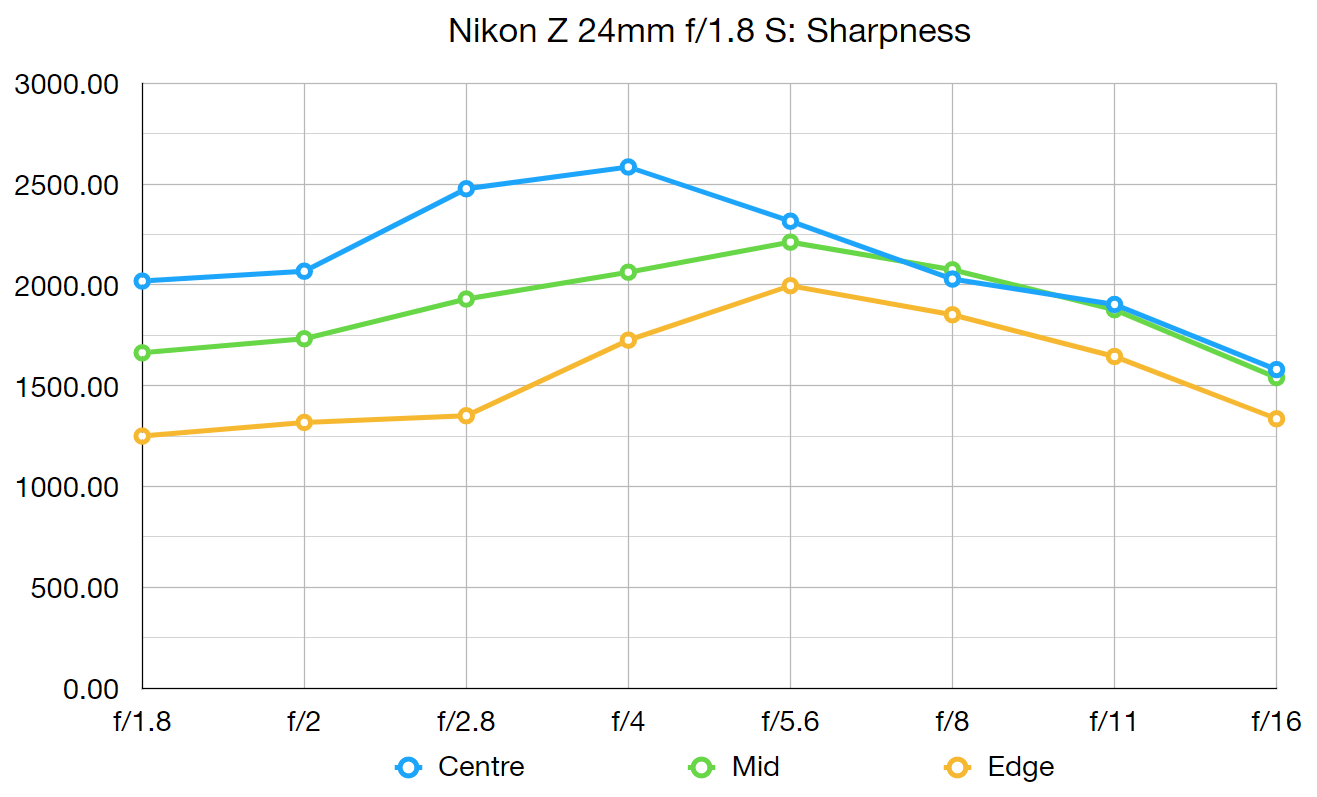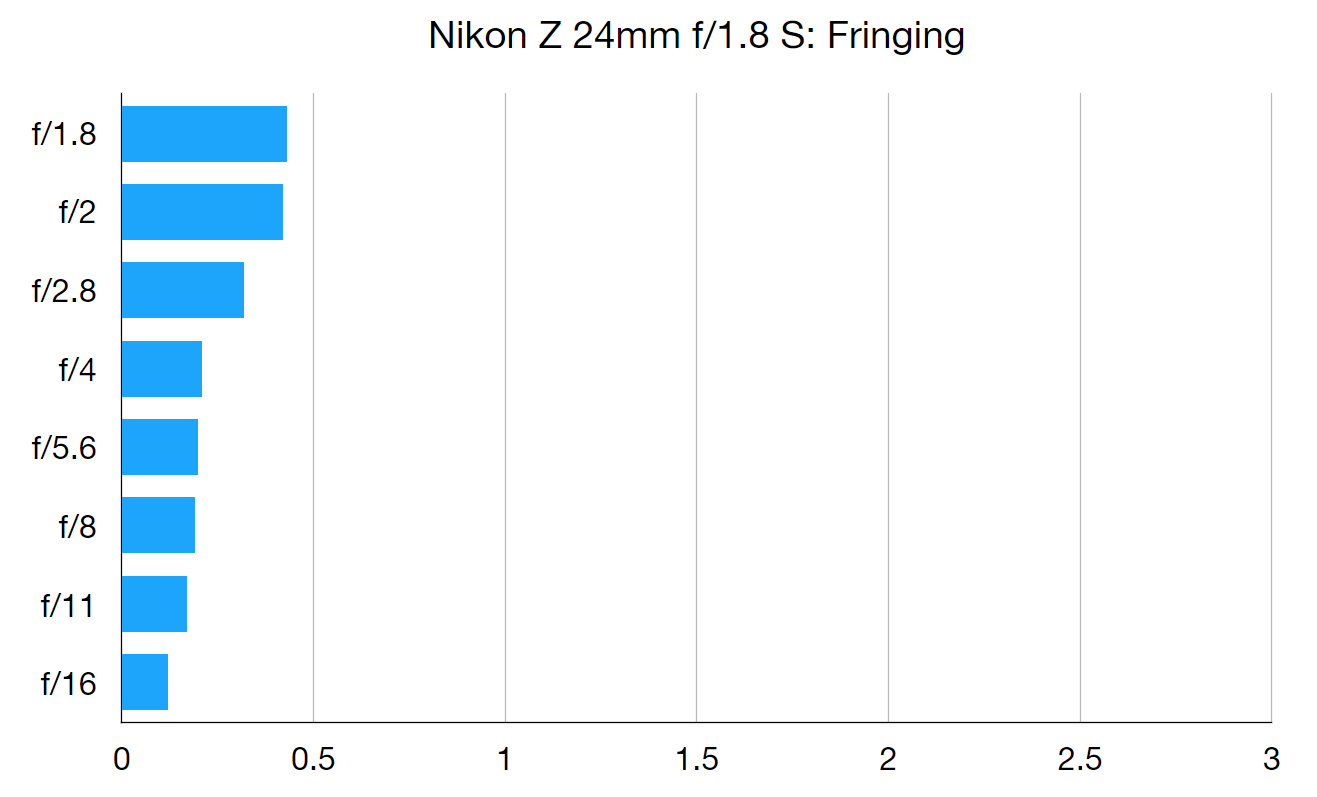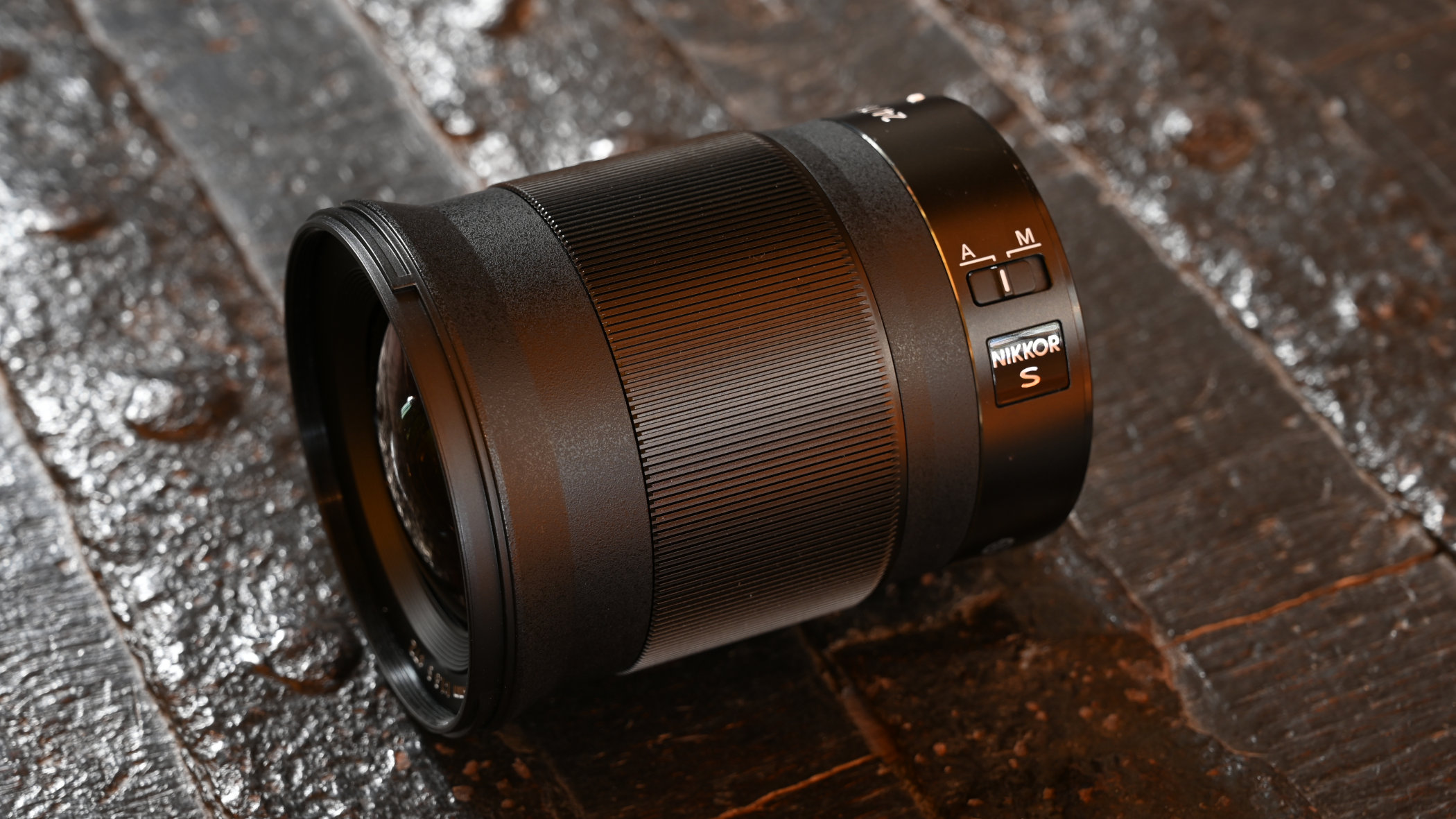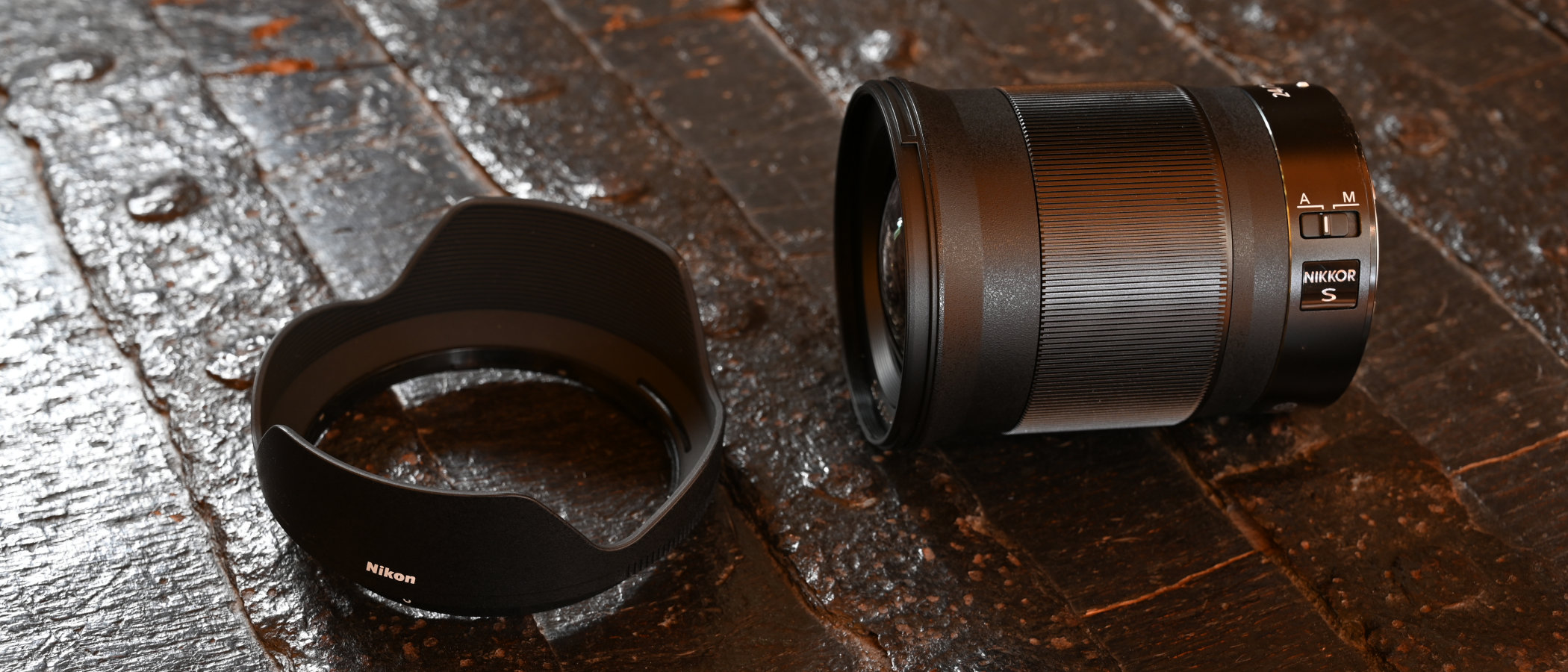Digital Camera World Verdict
Nikon’s brace of Z-mount 24-70mm zoom lenses for its full-frame mirrorless cameras perform so well that you’d be forgiven for wondering why there’s a need for a 24mm prime as well. Naturally, any prime lens is good if you like composing shots with your feet, and totting up your count of Fitbit steps, but the Z 24mm is also faster than its zoom siblings, with an f/1.8 aperture rating. What’s more, it delivers drop-dead gorgeous image quality even when shooting wide-open.
Pros
- +
Spectacular image quality in all respects
- +
Fast, virtually silent autofocus system
- +
Customisable focus/control ring
Cons
- -
No focus distance scale
- -
Widest aperture is ‘only’ f/1.8
Why you can trust Digital Camera World
The Nikkor Z 24mm f/1.8 S has pretty modest-sounding specifications by today's standards, but there's nothing wrong with that. While some lens manufacturers have been bulking up their offerings and creating heavyweight f/1.4 optics and even faster glass, Nikon has stuck mostly to a more modest f/1.8 aperture rating for the prime lenses in its Z mount S-line stable.
The Nikkor Z 58mm f/0.95 Noct is a notable exception but the rule of thumb is that, while the 24mm, 35mm, 50mm and 85mm f/1.8 lenses certainly aren’t small, they’re nevertheless quite compact and lightweight. This makes them look and feel a perfect match for the Nikon Z 6 and Z 7 full-frame bodies. The 24mm also makes an ideal general purpose and street photography lens for the DX format Nikon Z 50, on which it has an ‘effective’ 36mm focal length.
You can see what other lenses are or will be available for these cameras in our Nikon Z lens roadmap article or, if you have a Nikon DSLR, check out our guide to the best Nikon lenses to get.
Specs
Mount: Nikon Z
Lens construction: 12 elements in 10 groups
Angle of view: 84 degrees
Diaphragm blades: 9
Minimum aperture: f/16
Minimum focusing distance: 0.25m
Maximum magnification ratio: 0.15x
Filter size: 72mm
Dimensions: 78x97mm
Key features
Sharing the same 72mm filter thread as the Nikkor Z 24-70mm f/4 S standard zoom, the 24mm is also a very similar size and weight overall. As usual for Z mount prime lenses, there’s a switch for auto/manual focusing and the large manual focus ring is electronically coupled to the stepping motor that drives autofocus. Furthermore, you can customise the action of the focus ring during autofocus, to silently control the aperture value or to apply varying amounts of exposure compensation.
The optical path is based on 12 elements in 10 groups, and includes four aspherical elements and an ED (Extra-low Dispersion) element. The overall aim is to maximize sharpness and contrast while keeping distortions and chromatic aberrations to a minimum. Nano Crystal Coat is also applied to minimize ghosting and flare, and to help retain good contrast even when shooting into the light.
Typical of full-frame compatible Z mount lenses, there’s no optical VR (Vibration Reduction), the lens instead relying on 5-stop, 5-axis stabilization built into Nikon’s full-frame mirrorless camera bodies. That’s perfectly acceptable when shooting on the Z 6 and Z 7, but it results in no stabilization being available when shooting with the DX format Z 50.
The best camera deals, reviews, product advice, and unmissable photography news, direct to your inbox!
As we’ve come to expect from S-line lenses, the 24mm is supplied complete with a petal-shaped, bayonet-fit hood and a soft pouch, as well as front and rear lens caps. Nikon also offers a range of optional circular polarizing, soft focus and ‘neutral colour’ filters, the last of which is mainly for physical protection of the front element, but is also claimed to reduce ghosting and flare.
Build and handling
High quality plastics and a metal mounting plate combine to give the lens a solid and sturdy, yet comfortably lightweight feel. Every joint and moving part of the lens’s exterior is fitted with a weather-seal, from the focus/control ring and frontal areas to the A/M switch at the rear. There’s also Nikon’s usual rubber ring around the mounting plate. We were glad of these while testing the lens during a mighty hailstorm.
The manual focus/control ring is comfortably large but, typically for an electronically coupled ‘fly by wire’ mechanism, gives practically no mechanical feedback. Even so, it operates extremely smoothly and enables very precise manual adjustments. Manual focusing can sometimes be preferable, especially when shooting extreme close-ups. Indeed, the lens has a minimum focus distance of just 0.25m from the sensor position, about half this distance being taken up by the camera and lens itself.
Performance
There’s little point in having a fast, wide-aperture lens if sharpness and contrast drop off horribly when shooting wide-open. To its credit, the Nikon Z 24mm delivers spectacular sharpness and contrast even at f/1.8, right across the frame. It reaches even dizzier heights of sharpness at apertures of between f/2.8 and f/5.6, returning to similarly excellent values from f/8 to f/11. There’s a bit of a drop-off at the narrowest aperture of f/16 due to diffraction, which is only to be expected.
Shooting wide-open at or near the shortest focus distance, you can shrink the depth of field sufficiently to make close foreground objects stand out against a fairly blurry background. We wouldn’t normally comment on bokeh in such a wide-angle lens but it’s actually pretty good.
Colour rendition is immensely pleasing and negative aberrations like vignetting, colour fringing and distortion are very minimal, aided by automatic in-camera corrections. Resistance to ghosting and flare is typically good for a Nikon lens featuring Nano Crystal Coat. Overall, the performance is epic.
Lab tests

Sharpness
Centre-frame sharpness is excellent from wide open right through to f/11. Wide lenses struggle to produce high edge sharpness scores when shooting our close-range sharpness test chart, but edge-sharpness remains excellent in real-world shooting at more typical distances.

Fringing
Lateral chromatic aberration is entirely negligible, even in the extreme edges and corners of the image frame.
Distortion: 0.14
(A score of zero indicates no distortion)
With a little help from automatic corrections, there’s virtually no distortion to speak of, with just the merest hint of pincushion.

Verdict
We’ve tested a veritable cluster of Nikon Z mount full-frame prime and zoom lenses to date and every single one of them has been a star performer. The 24mm f/1.8 S is no exception, combining superb image quality with intuitive and finely honed handling characteristics. First-class optics are wrapped up in a compact and lightweight yet robust package, making this lens an absolute joy to use and a Nikkor lens to treasure.
Read more:
• The Nikon Z lens roadmap, and what's coming next!
• These are the best Nikon cameras today
• Got a Nikon DSLR? These are the best Nikon lenses to get
Matthew Richards is a photographer and journalist who has spent years using and reviewing all manner of photo gear. He is Digital Camera World's principal lens reviewer – and has tested more primes and zooms than most people have had hot dinners!
His expertise with equipment doesn’t end there, though. He is also an encyclopedia when it comes to all manner of cameras, camera holsters and bags, flashguns, tripods and heads, printers, papers and inks, and just about anything imaging-related.
In an earlier life he was a broadcast engineer at the BBC, as well as a former editor of PC Guide.






